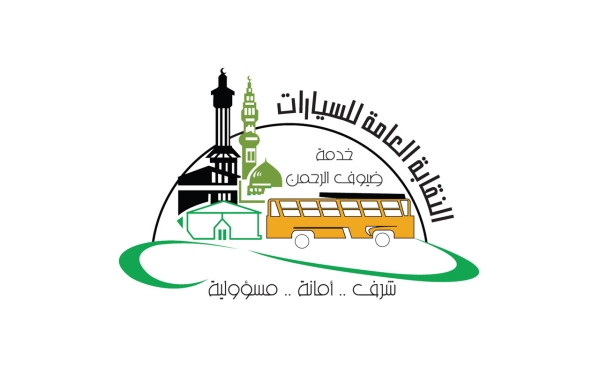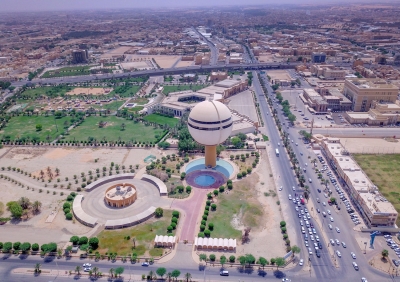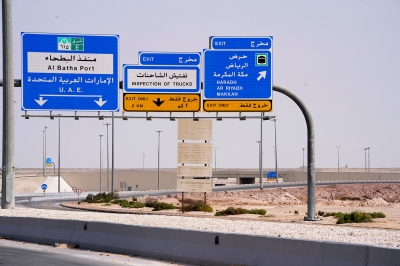

The General Syndicate of Cars is the entity responsible for overseeing companies that provide transportation services for pilgrims in the Kingdom of Saudi Arabia. It offers organized transportation services to Hajj and Umrah pilgrims and works on developing operational plans, improving work mechanisms, and enhancing transportation modes. It operates three centers: the main center in Makkah al-Mukarramah, and branches in al-Madinah al-Munawwarah and Jeddah.
History of the General Syndicate of Cars
The General Syndicate of Cars was established in 1952 to manage and organize the transportation of pilgrims, initially under the supervision of the General Directorate of Hajj and Broadcasting (formerly). Later, the responsibility for overseeing the syndicate was transferred to the Ministry of Hajj and Umrah.
The General Syndicate of Cars began its operations with one thousand buses, 160 small transport vehicles, and five transport companies. By 2000, its fleet had grown to 10,811 vehicles, and the number of companies contracted with the syndicate reached eleven, with 1,855 buses leased. In 2019, the number of transport companies and institutions under the syndicate's umbrella reached forty-nine, employing around 45,000 workers, including technicians, staff, and drivers, during the Hajj season. A total of 18,000 buses were used to transport 1,857,810 pilgrims, with twenty-five support centers and thirty-four field vehicles operating 24/7 in Makkah al-Mukarramah and along the roads connecting al-Madinah al-Munawwarah, Makkah al-Mukarramah, and Jeddah. From its inception until 2019, the syndicate transported approximately 73.5 million pilgrims. In 2023, it expanded to include sixty-eight transport establishments, with a fleet of 19,957 modern buses, supported by four reception centers, sixteen road assistance centers, fourteen field patrols, 480 mobile workshops for bus maintenance, and 118 tow trucks to handle broken-down buses on the roads.
The strategic objectives of the General Syndicate of Cars
The General Syndicate of Cars aims to achieve several strategic objectives, including implementing the annual Hajj plan established by the Kingdom's government to meet the transportation needs of the pilgrims. This is accomplished by offering innovative transportation services, as well as organizing, arranging, and facilitating the overall transportation process. The General Syndicate of Cars works towards achieving financial independence and creating investment opportunities to diversify and grow its income. It also aims to establish basic models that meet transportation service standards and specifications, applying for approval from relevant entities. Additionally, the syndicate is focused on developing and implementing a strategy that enhances its position and strengthens relationships with transportation companies, while leveraging the programs of Saudi Vision 2030.
Among the objectives of the General Syndicate of Cars is the use of modern technology to enhance systems and implement smart and secure solutions in transportation services. It also seeks to create an operational environment that meets labor market needs according to global standards, develop the workforce, attract new talents, manage risks, and respond quickly to changes by improving work methodologies. Additionally, it encourages investors to invest in the field of transporting pilgrims.
Development of transportation services at the General Syndicate of Cars
The General Syndicate of Cars has contributed to modernizing the types of vehicles used to transport pilgrims. This evolution began with the use of old trucks originally designed for transporting goods, followed by school buses, and later transitioned to more advanced bus designs starting in the late twentieth century. Today, the syndicate employs modern buses, with a maximum age of ten years from the date of manufacture.
The General Syndicate of Cars is also working on updating its systems electronically, using performance indicators to measure the quality and progress of operations. To support this, the Transportation Information Center was established, which includes a command and control room designed to leverage technology for automatically monitoring and addressing reports. This enables real-time tracking of buses. The command room detects malfunctions automatically and forwards them to the relevant departments within the syndicate for resolution. Additionally, the syndicate launched the "Dhaif" electronic platform, which focuses on tracking, guiding, operating, and scheduling bus trips.
Transportation methods of the General Syndicate of Cars
The General Syndicate of Cars has adopted several methods to fulfill its tasks of transporting pilgrims:
- Transport from arrival ports: This involves transporting pilgrims from the air and sea ports, including King Abdulaziz International Airport in Jeddah, Prince Mohammed Bin Abdulaziz International Airport in al-Madinah al-Munawwarah, and maritime ports in Jeddah Islamic Port and Yanbu Port, to their accommodations via equipped buses.
- Intercity transport between Hajj cities: Before the Hajj season, transportation occurs between Makkah al-Mukarramah and al-Madinah al-Munawwarah. After the season, transport is provided between Makkah al-Mukarramah and al-Madinah al-Munawwarah, Makkah al-Mukarramah and Jeddah, and al-Madinah al-Munawwarah and Jeddah.
- Transport within the holy sites is divided into four categories. The first is the two-trip system, where one seat is allocated for two pilgrims, requiring two phases to transport the full group. The second is the single-trip system, in which pilgrims are transported to their destination in one trip by providing enough buses to accommodate the required number, with specific allocations for each Tawafa institution. The third is the shuttle transport system, introduced in 1996, which aims to speed up transportation and improve efficiency by designating specific routes for buses, allowing up to seven trips, and transporting six or seven pilgrims per seat. The fourth is the train transport system within the holy sites, with a capacity of 72,000 passengers per hour, transporting more than 350,000 pilgrims between the holy sites. This method has reduced the number of buses within the holy sites, with buses being held in strategic reserve for emergencies, such as train breakdowns.
Community service of the General Syndicate of Cars
In line with Saudi Vision 2030 and its emphasis on social responsibility programs as a key contributor to enhancing the quality of life in the Kingdom, the General Syndicate of Cars has contributed since the launch of the Community Service Initiative Project. This effort, in collaboration with various government and private entities and transportation companies under its umbrella, has provided buses to serve many service-requesting organizations, covering different regions across the Kingdom.
Related quizzes

